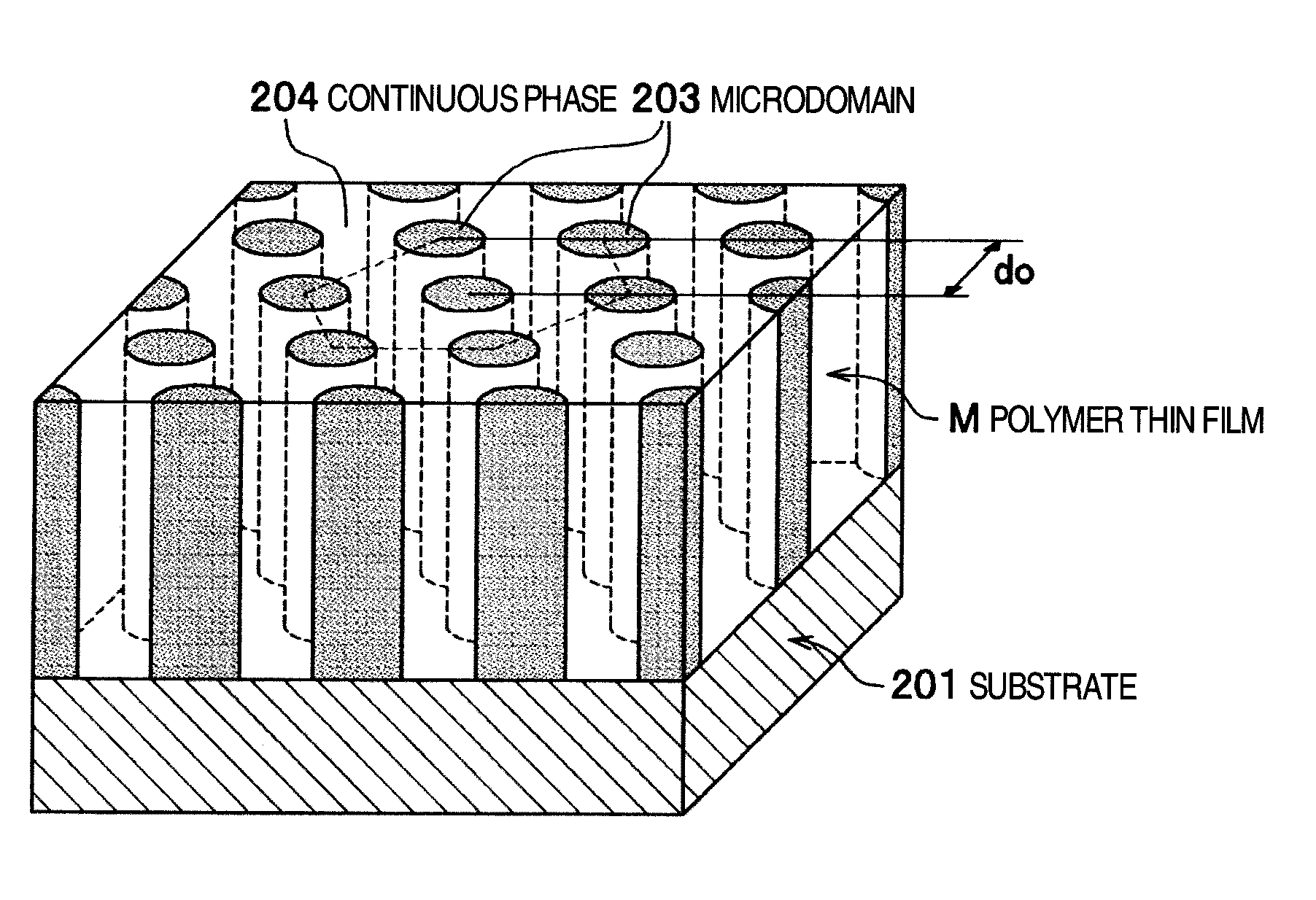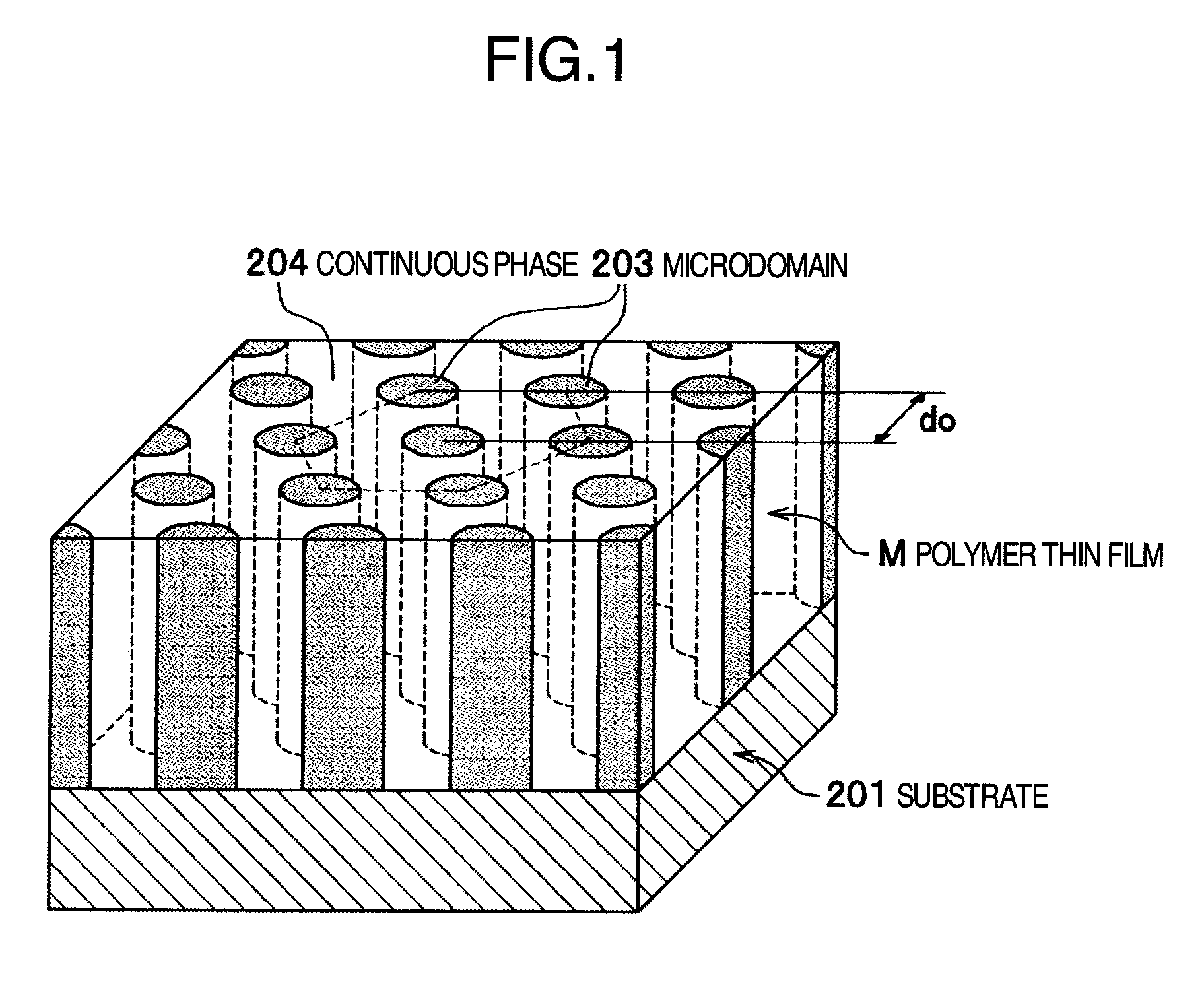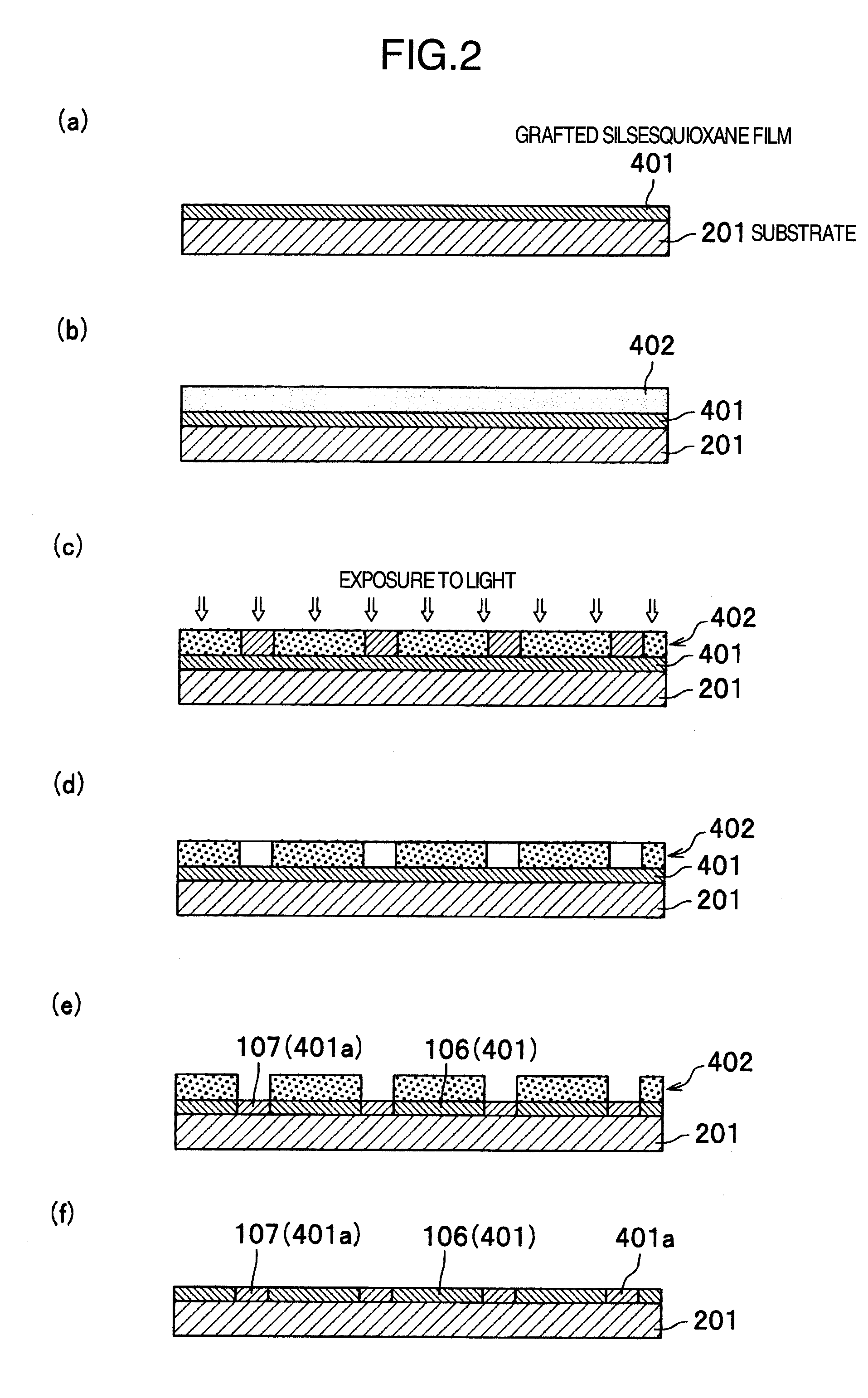Polymer thin film, patterned media, production methods thereof, and surface modifying agents
a technology of patterned media and polymer thin film, which is applied in the direction of photomechanical equipment, instruments, transportation and packaging, etc., can solve the problems of large investment, large fabrication throughput, and large size devices, and achieve excellent regularity, reduced defects, and improved production efficiency
- Summary
- Abstract
- Description
- Claims
- Application Information
AI Technical Summary
Benefits of technology
Problems solved by technology
Method used
Image
Examples
example 1
Measurement of Natural Period d0 of Block Copolymer
[0140]Example 1 first prepared the block copolymer for forming the polymer thin film.
[0141]More specifically, the copolymer of polymethylmethacrylate-block-poly3-(3,5,7,9,11,13,15-heptaisobutyl-pentacyclo[9.5.|3,9.|5,15|7,13]octacyloxan-1-yl)propylmethacrylate (PMMA-b-PMAPOSS) was prepared, wherein the PMMA segment corresponding to the second segment A2 (refer to FIG. 6) had a number-average molecular weight Mn of 4,100, and PMAPOSS segment corresponding to the first segment A1 (refer to FIG. 6) had a number-average molecular weight Mn of 26,900.
[0142]The copolymer was referred to as the “first” block copolymer “PMMA(4.1 k)-b-PMAPOSS (26.9 k),” as shown in Table 1. The first block copolymer had a polydisperse index Mw / Mn of the overall molecular weight distribution of 1.03, by which was meant that the copolymer was microphase-separated into the columnar microdomains 203 of PMMA and continuous phase of the PMAPOSS.
TABLE 1Number-avera...
example 2
[0174]Example 2 also used the block copolymer of polymethylmethacrylate-block-poly3-(3,5,7,9,11,13,15-heptaisobutyl-pentacyclo[9.5.|3,9.|5,15|7,13]octacyloxan-1-yl)propylmethacrylate (PMMA-b-PMAPOSS), wherein the PMMA segment corresponding to the second segment A2 (refer to FIG. 6) had a number-average molecular weight Mn of 4,900, and PMAPOSS segment corresponding to the first segment A1 (refer to FIG. 6) had a number-average molecular weight Mn of 32,500.
[0175]The block copolymer was referred to as the “second” block copolymer PMMA(4.9 k)-b-PMAPOSS (32.5 k) as shown in Table 1. The second block copolymer had a polydisperse index Mw / Mn of the overall molecular weight distribution of 1.03, by which was meant that the copolymer was microphase-separated into the columnar microdomains 203 of PMMA and continuous phase of the PMAPOSS.
[0176]The second block copolymer was measured for its natural period d0 in the same manner as in Example 1. It was 30 nm.
[0177]This example patterned, as wi...
example 3
[0201]Example 3 describes an embodiment of producing a pattern substrate (patterned media). This example decomposed the columnar microdomains and removed them from the polymer thin film M following the steps shown in FIGS. 7 (a) and (b), in order to form the porous thin film on the substrate.
[0202]Example 3 produced the microphase-separated structure with the columnar microdomains 203 of PMMA upstanding on the substrate 201 (extending in the polymer thin film M thickness direction) following the procedure adopted in Example 1 (refer to FIG. 7 (a)). This example also adopted the pattern shown in FIG. 9, as in Example 1. The second block copolymer was also used, as in Example 1.
[0203]Next, PMMA-b-PMAPOSS was spread on the substrate 201 chemically patterned at intervals of 48 nm, which was twice as long as natural period d0 (24 nm) of PMMA-b-PMAPOSS, to have the 40 nm thick film. The film was then exposed to the vapor of carbon disulfide solvent to develop the microphase-separated stru...
PUM
| Property | Measurement | Unit |
|---|---|---|
| lattice-lattice distance | aaaaa | aaaaa |
| chemical properties | aaaaa | aaaaa |
| thickness | aaaaa | aaaaa |
Abstract
Description
Claims
Application Information
 Login to View More
Login to View More - R&D
- Intellectual Property
- Life Sciences
- Materials
- Tech Scout
- Unparalleled Data Quality
- Higher Quality Content
- 60% Fewer Hallucinations
Browse by: Latest US Patents, China's latest patents, Technical Efficacy Thesaurus, Application Domain, Technology Topic, Popular Technical Reports.
© 2025 PatSnap. All rights reserved.Legal|Privacy policy|Modern Slavery Act Transparency Statement|Sitemap|About US| Contact US: help@patsnap.com



